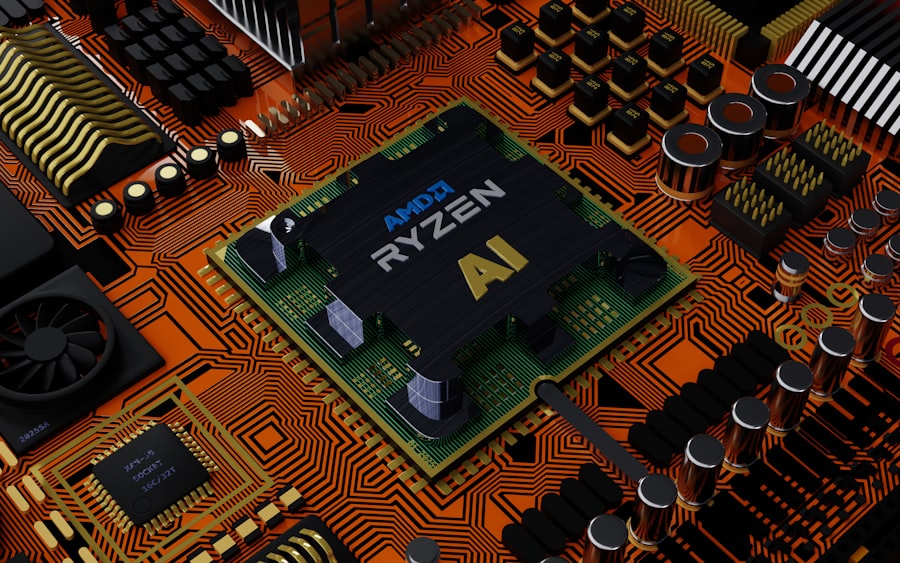Artificial Intelligence (AI) has emerged as a transformative force in various sectors, offering innovative solutions to some of the world’s most pressing challenges, including global poverty. With over 700 million people living on less than $1.90 a day, the need for effective strategies to alleviate poverty is more urgent than ever. AI technologies, characterized by their ability to analyze vast amounts of data, learn from patterns, and make predictions, hold the potential to revolutionize how we approach poverty alleviation.
By harnessing AI, governments, non-profits, and businesses can create targeted interventions that address the unique needs of impoverished communities, ultimately fostering sustainable development and economic growth. The intersection of AI and global poverty presents both opportunities and challenges. While AI can enhance efficiency and effectiveness in various sectors, there is a risk that its benefits may not be equitably distributed.
The digital divide remains a significant barrier, as many impoverished communities lack access to the necessary technology and infrastructure to leverage AI solutions. Furthermore, ethical considerations surrounding data privacy and algorithmic bias must be addressed to ensure that AI applications do not inadvertently perpetuate existing inequalities. As we explore the multifaceted role of AI in combating global poverty, it is crucial to consider both its potential and the obstacles that must be overcome to ensure inclusive progress.
Key Takeaways
- AI has the potential to address global poverty and inequality by revolutionizing various sectors such as education, healthcare, agriculture, finance, disaster response, and infrastructure.
- In education, AI can personalize learning, provide access to quality education, and develop essential skills for the future workforce, especially in underserved communities.
- AI in healthcare can improve access to services, diagnose diseases, and provide personalized treatment, particularly in remote and low-resource areas.
- AI in agriculture can enhance productivity, optimize resource management, and ensure food security for vulnerable populations.
- AI in finance can promote financial inclusion, empower marginalized communities, and stimulate economic growth, ultimately reducing global poverty and inequality.
AI in Education and Skills Development
Education is a cornerstone of economic empowerment and social mobility, yet millions of children and adults in impoverished regions lack access to quality educational resources. AI has the potential to bridge this gap by providing personalized learning experiences tailored to individual needs. For instance, AI-driven platforms can analyze a learner’s strengths and weaknesses, adapting content to optimize their educational journey.
This personalized approach not only enhances engagement but also improves learning outcomes, making education more accessible and effective for those who have historically been underserved. Moreover, AI can play a pivotal role in skills development by identifying labor market trends and forecasting future job demands. By analyzing data on employment patterns, AI can help educational institutions design curricula that align with the skills needed in the workforce.
This alignment is particularly crucial in developing economies where job markets are rapidly evolving due to technological advancements. By equipping individuals with relevant skills, AI can empower them to secure better employment opportunities, thereby breaking the cycle of poverty and fostering economic resilience within communities.
AI in Healthcare and Access to Services

Access to quality healthcare remains a significant challenge in many impoverished regions, where limited resources and infrastructure hinder effective service delivery. AI technologies can enhance healthcare accessibility by streamlining processes and improving diagnostic accuracy. For example, AI-powered telemedicine platforms can connect patients in remote areas with healthcare professionals, enabling timely consultations and reducing the need for travel.
This is particularly beneficial for individuals who may otherwise forgo medical care due to distance or financial constraints. In addition to improving access, AI can also contribute to better health outcomes by facilitating early disease detection and personalized treatment plans. Machine learning algorithms can analyze patient data to identify risk factors and predict potential health issues before they escalate.
This proactive approach not only saves lives but also reduces healthcare costs by minimizing the need for extensive treatments. By leveraging AI in healthcare, we can create a more equitable system that prioritizes the needs of vulnerable populations, ultimately contributing to poverty alleviation.
AI in Agriculture and Food Security
Agriculture is a vital sector for many developing economies, yet it faces numerous challenges such as climate change, resource scarcity, and market volatility. AI can play a transformative role in enhancing agricultural productivity and ensuring food security for impoverished communities. Precision agriculture, powered by AI technologies, allows farmers to optimize resource use by analyzing data on soil conditions, weather patterns, and crop health.
This data-driven approach enables farmers to make informed decisions about planting schedules, irrigation practices, and pest management, ultimately leading to higher yields and reduced waste. Furthermore, AI can facilitate better market access for smallholder farmers by connecting them with buyers through digital platforms. These platforms can leverage machine learning algorithms to match supply with demand, ensuring fair prices for farmers while providing consumers with fresh produce.
By improving market access and enhancing productivity, AI can contribute significantly to food security and economic stability in impoverished regions. As agricultural practices evolve through the integration of AI technologies, we can envision a future where hunger is significantly reduced, and communities thrive.
AI in Financial Inclusion and Economic Empowerment
Financial inclusion is a critical component of poverty alleviation, as access to financial services empowers individuals to invest in their futures. However, many people in developing regions remain unbanked or underbanked due to a lack of infrastructure or traditional banking services. AI can help bridge this gap by enabling innovative financial solutions such as mobile banking and micro-lending platforms.
These technologies utilize machine learning algorithms to assess creditworthiness based on alternative data sources, allowing individuals without formal credit histories to access loans and other financial products. Moreover, AI-driven financial literacy programs can educate individuals about managing their finances effectively. By providing tailored advice based on users’ financial behaviors and goals, these programs can empower individuals to make informed decisions about saving, investing, and spending.
As more people gain access to financial services through AI technologies, we can expect a ripple effect that fosters economic empowerment and reduces poverty levels across communities.
AI in Disaster Response and Climate Change Adaptation

The impact of climate change disproportionately affects impoverished communities that often lack the resources to adapt or recover from disasters. AI can play a crucial role in enhancing disaster response efforts by providing real-time data analysis and predictive modeling capabilities. For instance, machine learning algorithms can analyze weather patterns and historical data to forecast natural disasters such as floods or hurricanes.
This information enables governments and organizations to implement timely evacuation plans and allocate resources effectively, ultimately saving lives and minimizing damage. In addition to immediate disaster response, AI can also support long-term climate change adaptation strategies. By analyzing environmental data, AI can help identify vulnerable areas and recommend sustainable practices that mitigate risks associated with climate change.
For example, AI-driven models can assist farmers in selecting resilient crop varieties or optimizing irrigation practices based on changing weather patterns. By integrating AI into disaster response and climate adaptation efforts, we can build more resilient communities that are better equipped to face the challenges posed by climate change.
AI in Infrastructure and Urban Development
As urbanization continues to accelerate globally, many developing regions face significant challenges related to infrastructure development and urban planning. AI technologies can enhance urban development efforts by providing data-driven insights that inform decision-making processes. For instance, machine learning algorithms can analyze traffic patterns and population density data to optimize public transportation systems or identify areas in need of infrastructure investment.
This data-driven approach ensures that resources are allocated efficiently, ultimately improving the quality of life for residents in urban areas. Moreover, AI can facilitate smart city initiatives that promote sustainability and inclusivity. By integrating IoT devices with AI analytics, cities can monitor energy consumption, waste management, and air quality in real-time.
This information allows city planners to implement targeted interventions that address environmental concerns while enhancing urban living conditions. As cities evolve into smart urban centers powered by AI technologies, we can envision a future where infrastructure development aligns with the needs of all residents, including those from marginalized communities.
The Future of AI in Addressing Global Poverty and Inequality
The potential of AI to address global poverty is immense; however, realizing this potential requires a concerted effort from all stakeholders involved—governments, businesses, non-profits, and communities themselves. As we move forward into an increasingly digital world, it is essential to prioritize inclusivity in the development and deployment of AI technologies. Ensuring equitable access to these innovations will be crucial in preventing further entrenchment of existing inequalities while maximizing their benefits for impoverished populations.
Looking ahead, the future of AI in combating global poverty hinges on our ability to navigate the ethical challenges associated with its use while fostering collaboration across sectors. By investing in education, infrastructure, and technology access for marginalized communities, we can create an environment where AI serves as a powerful tool for social good rather than a source of division. Ultimately, harnessing the capabilities of AI offers a promising pathway toward a more equitable world where poverty is significantly reduced and opportunities for all are expanded.
In exploring the potential of AI to address global challenges such as poverty and inequality, it’s also crucial to consider the accessibility of AI tools. An excellent resource that delves into this aspect is an article that discusses the best free software for translation. This piece, available at Discover the Best Free Software for Translation Today, highlights how these tools can bridge communication gaps and foster better understanding and cooperation across diverse populations. Such technologies are vital in ensuring that the benefits of AI are accessible to all, including those in underprivileged regions, thereby contributing to a more equitable global society.
FAQs
What is AI?
AI, or artificial intelligence, refers to the simulation of human intelligence in machines that are programmed to think and act like humans. This includes tasks such as learning, problem-solving, and decision-making.
How can AI help tackle global poverty and inequality?
AI can help tackle global poverty and inequality by providing solutions in various areas such as healthcare, education, agriculture, and financial inclusion. For example, AI can be used to improve access to healthcare in remote areas, provide personalized learning opportunities for students, optimize agricultural production, and expand financial services to underserved populations.
What are some examples of AI applications in addressing global poverty and inequality?
Some examples of AI applications in addressing global poverty and inequality include using AI-powered chatbots to provide healthcare information and support, using machine learning algorithms to identify patterns in agricultural data for better crop management, and using AI to analyze financial data and provide access to credit for underserved communities.
What are the potential challenges and risks of using AI to tackle global poverty and inequality?
Some potential challenges and risks of using AI to tackle global poverty and inequality include concerns about data privacy and security, the potential for AI to exacerbate existing inequalities if not implemented carefully, and the need to ensure that AI solutions are culturally and contextually appropriate for the communities they are intended to serve. Additionally, there may be concerns about job displacement and ethical considerations related to AI decision-making.

